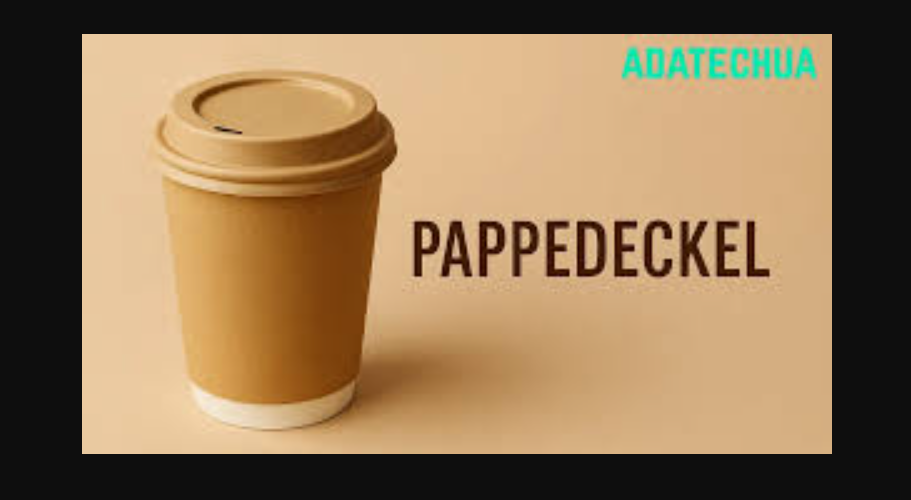Physical Address
304 North Cardinal St.
Dorchester Center, MA 02124
Physical Address
304 North Cardinal St.
Dorchester Center, MA 02124

The term pappedeckel originates from German, combining “Pappe” (cardboard) and “Deckel” (lid). It refers to flat, often circular cardboard covers used to seal cups, jars, and containers. While simple in design, pappedeckel play a vital role in protecting contents, reducing spills, and promoting eco-conscious practices.
Crafted from recycled or recyclable paperboard, these lids are lightweight, durable, and cost-effective. Beyond practical use, they provide a canvas for branding, messaging, or creative expression, bridging utility and style seamlessly.

Pappedeckel emerged in Europe as a response to rising environmental concerns and the demand for sustainable packaging. Originally, cardboard lids were a functional solution for hot beverages, but over time, they gained cultural recognition for their versatility.
In Germany and neighboring countries, the adoption of pappedeckel reflects a broader societal shift toward conscious consumption. Businesses and individuals alike value products that minimize environmental impact without sacrificing design or usability.
Cafés, restaurants, and fast-food chains increasingly use pappedeckel as alternatives to plastic or foil lids. Their heat resistance and lightweight durability make them ideal for hot beverages. By switching to cardboard lids, businesses not only reduce single-use plastic waste but also enhance their brand image among eco-conscious consumers.
Crafters and hobbyists repurpose pappedeckel for decorative projects: handmade jar covers, personalized gift toppers, or creative tags. Their affordability and recyclability make them ideal for artistic and educational applications.
Companies can print logos, QR codes, or promotional messages directly on pappedeckel. This transforms a simple lid into a powerful marketing tool, combining protection, sustainability, and visibility in one cost-effective package.
Switching to pappedeckel significantly reduces reliance on single-use plastics. Being biodegradable and often recyclable, cardboard lids align with circular economy principles. Production consumes fewer non-renewable resources and energy compared to plastic alternatives, making it a greener choice for businesses and consumers alike.
Beyond industrial and eco-conscious use, pappedeckel is gaining attention as a lifestyle concept. Certain brands integrate the term to evoke values like sustainability, self-care, and innovation.
For example, Pappedeckel-inspired fashion or wellness products merge functionality with personal expression. Hoodies, accessories, or beauty items branded under this philosophy emphasize comfort, eco-conscious living, and style.
This duality—practicality in packaging and aspirational lifestyle—demonstrates how a simple concept can influence consumer behavior and cultural trends.
These trends show that pappedeckel is not just a lid—it’s a symbol of innovation, responsible design, and lifestyle evolution.
Despite its advantages, pappedeckel faces some challenges:
Addressing these challenges requires education, improved materials, and creative marketing strategies to highlight both practical and lifestyle benefits.
The future of pappedeckel looks promising. Innovation in biodegradable coatings, integration with technology, and lifestyle branding will expand its applications. We can expect broader adoption in:
Pappedeckel demonstrates how a small, simple item can evolve into a multifunctional tool bridging utility, culture, and lifestyle.
Pappedeckel is more than a cardboard lid. It embodies the convergence of sustainability, functionality, and lifestyle innovation. From protecting hot beverages and promoting eco-friendly packaging to inspiring fashion and wellness trends, pappedeckel illustrates how small design elements can make a big impact.
By embracing these innovative, biodegradable lids, businesses and consumers contribute to a more sustainable world while participating in a cultural shift toward conscious, multi-dimensional living.
Whether in packaging, branding, or lifestyle, pappedeckel proves that even the simplest products can redefine how we think about sustainability, style, and daily life.